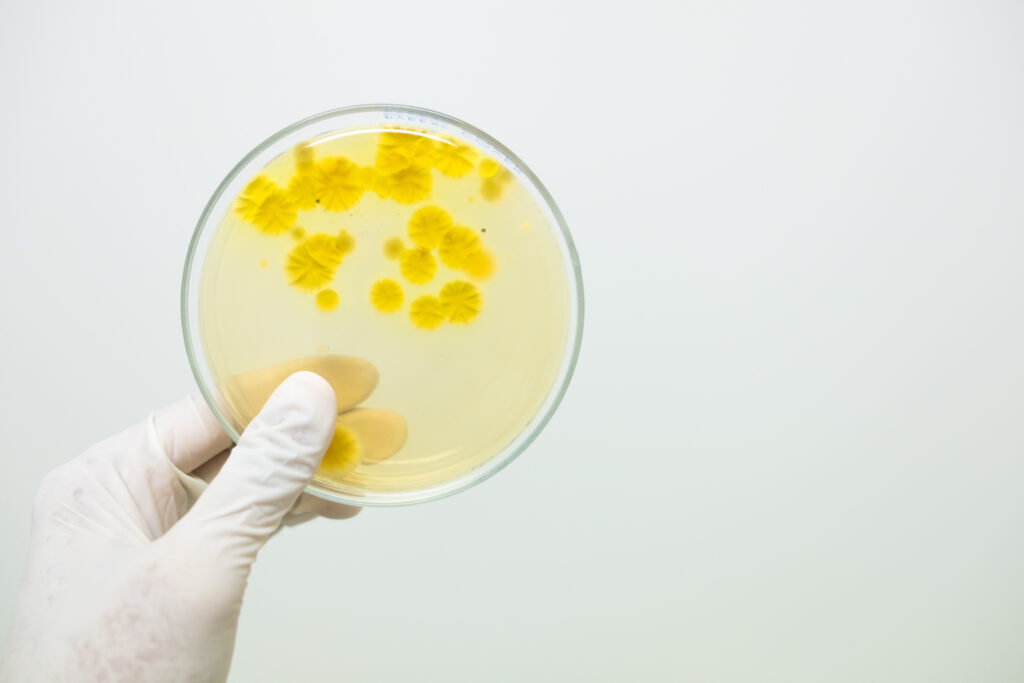Aspergillus Fumigatus, also known as A. Fumigatus, is a sneaky fungus that could be infecting your environment without your knowledge. This troublemaker in the mold world can cause various health problems if not addressed. In this article, we will discuss what A. fumigatus is, the associated health issues, and how to prevent its presence in your environment.

What is A. fumigatus?
Aspergillus fumigatus is a species of fungus that is found throughout the environment in things like soil, plant matter, and the dust in your house. The fungus can also produce airborne spores called conidia, which for most people, are safe to inhale. When a healthy individual inhales these spores, their immune system typically removes them from the body without leading to infection. However, for those who are sensitized, exposure to A. fumigatus can lead to a potentially-severe allergic reaction; and for at-risk groups and those who are immunocompromised, inhaling A. fumigatus can cause severe infection.
Any infection that’s caused by an Aspergillus species of fungus is called aspergillosis. There are many types of aspergillosis, such as:
All these infections cause harm to the airways and lungs and have the potential to be fatal if not treated by a medical professional.
Diagnosis and Treatments
Infections caused by A. fumigatus can be hard to diagnose due to the shared symptoms with other lung conditions. More than this, microscopic examinations can often be inconclusive because of the Aspergillus species appearing very similar to other fungal species. Though difficult to diagnose, medically professionals have many diagnostic methods for Aspergillus including things like sputum cultures to detect growth, chest X-rays, blood tests, and more.
The treatment for Aspergillosis depends on the type of infection and any underlying conditions you may have. Antifungals, corticosteroids, and surgery are the most common treatment options.
Prevention
Avoiding Contact
Avoiding activities that bring you face to face with Aspergillus is the main way to prevent infection. Activities like gardening, yard work, or visiting construction sites may expose you to higher levels of Aspergillus in the environment.
If you can’t avoid these environments and are immunocompromised or otherwise susceptible to reaction or infection, make sure to wear long pants and sleeves. If you’ll be handling soil or manure, wear gloves. Masks can also offer levels of protection depending on the quality of the mask used and if it is used correctly. If you are going to be exposed, it can be beneficial to wear a mask, but don’t forget to wash your hands after disposing of the mask.
Routine Testing
At-risk groups may benefit from periodic testing for Aspergillus. Testing routinely could detect an infection in the early stages, which gives time to work with your provider on a treatment plan.
Indoor Air Quality Systems
The dust in your home can carry hundreds of different harmful contaminants, including Aspergillus. Fortunately, air ionizers can help lower the risk of infection by removing dust and other airborne contaminants from the environment.
One efficient way to help prevent the spread of A. fumigatus is an in-home air quality system. While these systems are effective in slowly cleaning the air, they don’t target points of entry- like your front door. One innovative solution, AURA Ion Bar™, uses negative air ions to eliminate and deactivate pathogens at the entry point before they can enter your space. Ion Bar has also been lab tested to eliminate up to 99.98% of A. fumigatus specifically. This lowers the chances of infection and provides you with a safe environment.
Learn more about AURA Ion Bar here.
To protect your health, it’s important to keep your environment free of Aspergillus fumigatus. This is especially crucial if you’re in an at-risk group. By understanding the risks, taking preventative measures, and getting regular testing, you can greatly reduce the chances of developing aspergillosis.
This article has been reviewed and endorsed by Steve Cunnion, Ph.D., M.D., a world-renowned epidemiologist. Dr. Cunnion was the first person to alert the Western world of the SARS outbreak, for which he received the 2003 ProMED Reporting Award. Read more about Dr. Cunnion here.
Resources:
- Conidium | Fungal Reproduction, Asexual Propagation & Germination | Britannica
- Aspergillus Fumigatus: Types, Conditions, Symptoms, and More (healthline.com)
- Aspergillosis: Types, Causes & Symptoms (healthline.com)
- Allergic Pulmonary Aspergillosis | Johns Hopkins Medicine
- Chronic Pulmonary Aspergillosis: Causes, Treatment, Outlook (healthline.com)
- Invasive aspergillosis: Symptoms and more (medicalnewstoday.com)
- Routine Sputum Culture: Purpose, Procedure, and Side Effects (healthline.com)
- Antifungals: What They Treat, How They Work & Side Effects (clevelandclinic.org)
- Corticosteroids (clevelandclinic.org)
- Brooks, T, Behind the Mask; How the World Survived SARS. American Public Health Association, Washington, DC, 2005, p. 11
